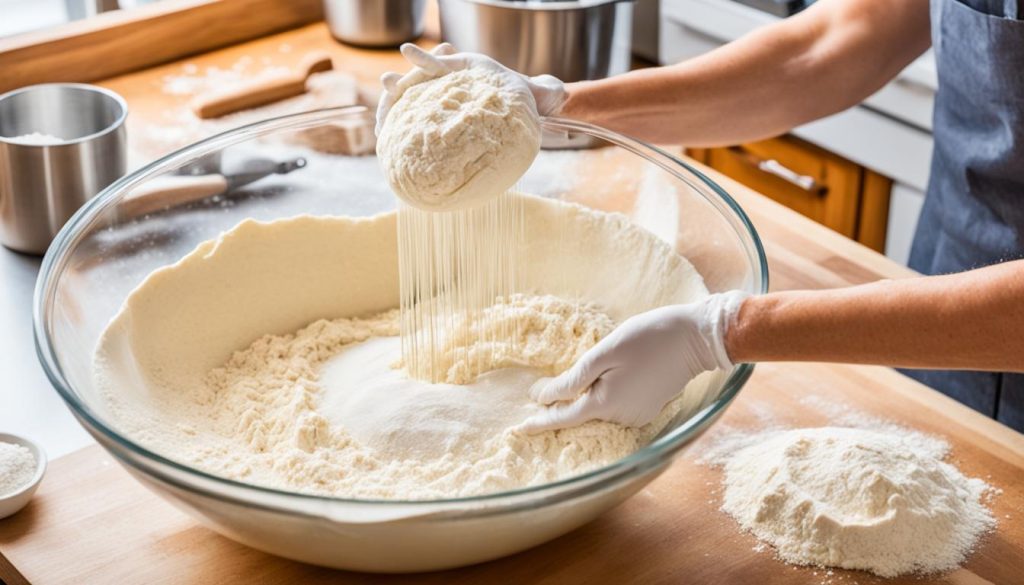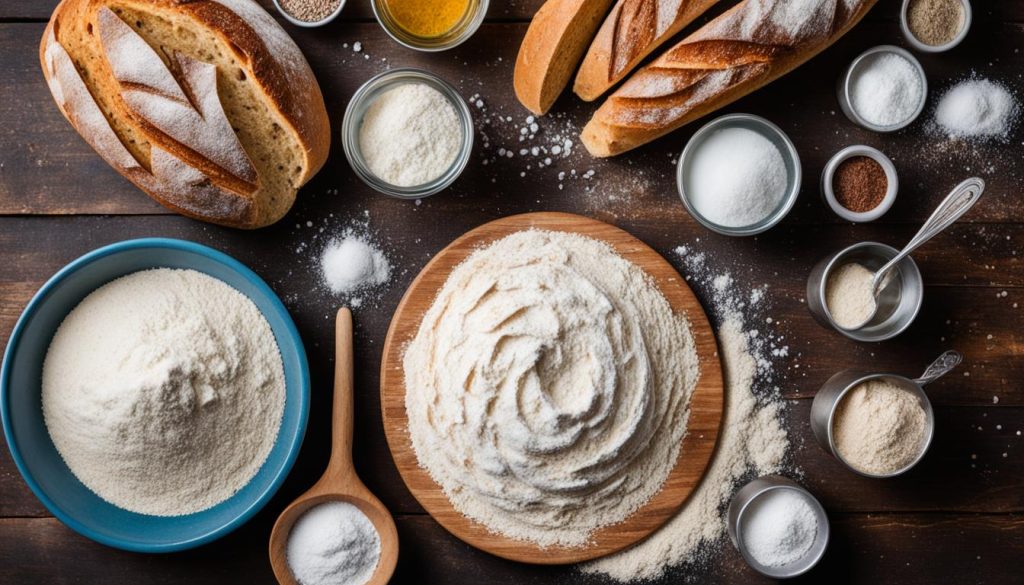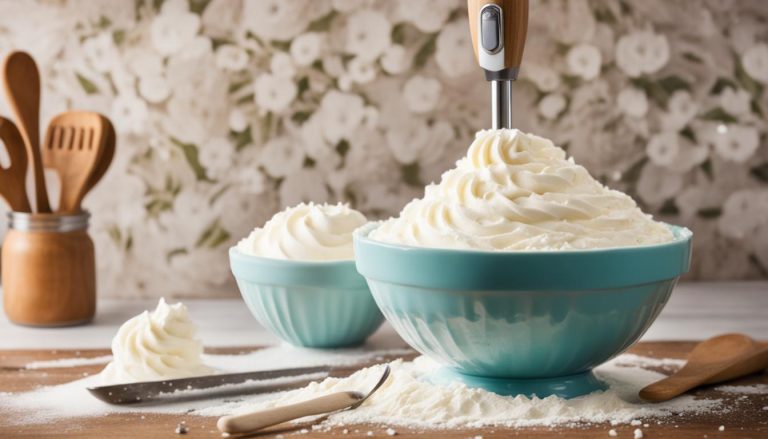Greetings, fellow home bakers! Today, I am excited to share with you my sourdough bread recipe, which delivers a crusty, chewy, and altogether delicious loaf every time. Making bread with sourdough has become increasingly popular in recent times, and for good reason. Not only does it imbibe the bread with a unique tangy flavour, but it is also healthier as it contains natural yeasts and is easy to digest.
In this article, I will guide you through every step of the bread-making process, from creating your sourdough starter to fermenting and baking the dough. Whether you are a seasoned baker or a beginner, my recipe with sourdough bread will turn you into a bread-baking maestro in no time.
Understanding Sourdough Bread
Before we dive into the recipe, let’s take a moment to understand what makes sourdough bread so unique. Sourdough bread is a fermented bread made using naturally occurring wild yeasts and lactobacilli bacteria. This natural fermentation process gives the bread its distinct tangy flavor and chewy texture.
If you’re curious about the science behind how sourdough bread is made, let me explain. The wild yeasts and bacteria present in the flour and air combine with the flour and water in the dough, causing it to ferment. This fermentation process creates organic acids and alcohol, which give the bread its distinct flavor and texture.
But what sets sourdough bread apart from other bread types like garlic bread and banana bread is not just its flavor but also its health benefits. The natural fermentation process helps to break down gluten, making it easier to digest for those who are gluten-sensitive. It also has a lower glycemic index than most bread, making it a good option for those with diabetes.
Sourdough bread truly is a unique and delicious bread that has stood the test of time. Now that we understand the basics, let’s move on to gathering our ingredients and getting started on our perfect sourdough bread recipe.
Gathering Your Ingredients
If you want to make the perfect sourdough bread recipe, you’ll need high-quality ingredients. Here are the essentials:
| Ingredient | Amount |
|---|---|
| Bread flour | 500 grams |
| Water | 350 milliliters |
| Sourdough starter | 100 grams |
A sourdough starter is a mixture of flour and water that has been fermented. It acts as the leavening agent in the bread and gives it its characteristic tangy flavor. If you don’t already have a starter, refer to the Creating Your Sourdough Starter section for detailed instructions on how to make one.
Make sure your bread flour is high in protein and has enough gluten to give your bread the right texture. You can also experiment with different types of flour to create unique variations of sourdough bread.
Now that we have all the ingredients we need, let’s move on to creating our sourdough starter.
Creating Your Sourdough Starter
Before you can make your delicious sourdough bread, you must first create a sourdough starter. The starter is essentially the leavening agent that is responsible for giving your bread its perfect rise and a unique tangy flavor. Following these simple steps will guide you through the process of creating and maintaining a healthy and active sourdough starter:
- Day 1: Mix 50g of wholemeal flour with 50g of water in a clean jar. Cover the mixture with a cheesecloth secured with a rubber band and store in a warm place for 24 hours.
- Day 2: Add another 50g of wholemeal flour and 50g of water to the jar and mix well. Cover and return the jar to the warm place for another 24 hours.
- Day 3: Repeat the process by adding another 50g of wholemeal flour and 50g of water, mix well, and cover the jar for another 24 hours.
- Day 4: You should now start to see activity in your starter with bubbles and a slightly fruity aroma. Feed the starter with 50g of strong white bread flour and 50g of water. Mix well, and cover the jar for another 24 hours.
- Day 5: Your starter should now be active and ready to use. You can now discard half of the starter and replenish it with 50g of strong white bread flour and 50g of water to maintain a healthy and active starter. Repeat this process every 24 hours, discarding half and replenishing with fresh flour and water, to maintain your starter.
That’s it! Creating and maintaining a sourdough starter may seem intimidating at first, but it is a surprisingly easy and rewarding process that will yield delicious results.
Mixing and Kneading the Dough
Now that you have your sourdough starter ready, it’s time to mix and knead the dough. This is where we start to develop the gluten structure that gives our bread its characteristic chewiness and texture.
Firstly, mix your starter with flour and water to form a rough dough, then let it rest for a few hours to allow the gluten to develop. Then comes the fun part – kneading the dough.
A good technique is to use the “stretch and fold” method. To do this:
- Grab one end of the dough and stretch it upwards.
- Fold the stretched part back towards the middle of the dough.
- Turn the dough 90 degrees and repeat this process.
Repeat this process for around 10-15 minutes until the dough is smooth, elastic, and springs back when touched.
Once your dough is kneaded, transfer it to a bowl and cover it with a damp cloth. Let it rest for a few more hours, allowing the dough to rise again.
Note: Exact kneading times may vary based on humidity and other factors, so use your intuition and experience to adjust.

Fermenting and Proofing the Bread
Once you’ve mixed and kneaded your dough, it’s time to let it ferment. This is where the magic happens! Fermentation allows the wild yeasts and lactobacilli bacteria to multiply and break down the starches and proteins in the dough, creating those delicious tangy flavors.
The length of the fermentation process will depend on the temperature and humidity in your kitchen, as well as the strength of your sourdough starter. A general guide is to let the dough ferment for 4-12 hours, but you can also use the “poke test” to check if it’s ready. Simply poke the dough with your finger – if the indent remains, it’s ready.
Once your dough has fermented, it’s time to shape it and let it proof. This is the final rise before baking, and it’s important to get it right to ensure a beautifully textured loaf. Shape your dough into a round ball or oval shape, and let it proof for 2-4 hours at room temperature, ideally covered with a damp cloth to prevent the dough from drying out.
If you want to achieve a crispy crust, you can also proof your dough in the refrigerator overnight. This slows down the fermentation process and allows for more complex flavors to develop. When you’re ready to bake, take the dough out of the fridge and let it come to room temperature before baking.
Overall, fermentation and proofing are crucial steps in the sourdough bread-making process. Take your time and pay attention to the dough, and you’ll be rewarded with a delicious and satisfying loaf of artisanal bread.
Baking Your Sourdough Bread
Congratulations! You’ve made it to the final step in creating your perfect sourdough loaf. Now it’s time to bake your dough to perfection.
First, preheat your oven to 450°F (230°C) and place your Dutch oven inside to heat up. This will ensure that the bread bakes evenly and gets that perfect crust.
Next, carefully remove the Dutch oven from the oven and sprinkle some flour on the bottom to prevent sticking. Gently place your dough into the Dutch oven and score the top to allow the bread to expand while baking.
Place the lid on the Dutch oven and bake for 30 minutes. Then remove the lid and bake for an additional 15-20 minutes until the crust is golden brown and crisp.
Remove the bread from the oven and let it cool on a wire rack for at least 30 minutes before slicing into it. This will allow the crumb to set and prevent it from becoming gummy.
Congratulations, you have now baked a beautiful, artisanal loaf of sourdough bread using your homemade starter and high-quality flour.
Don’t forget to share your creation with friends and family, and enjoy the delicious taste of fresh, homemade sourdough bread.

“Baking bread is like making love. You have to do it with all your heart and soul.” – Peter Reinhart
Troubleshooting Common Issues
Despite careful preparation, sometimes unexpected issues may arise when making sourdough bread. The following are common problems and their solutions:
Dense or Heavy Bread
When bread turns out too dense or heavy, it is usually due to under-proofing the dough or using a weak starter. Try increasing the proofing time or feeding your starter several times before use to strengthen it.
Flat Bread
If your bread turns out flat, it may be due to over-proofing or under-kneading the dough. Make sure you carefully follow the recipe instructions for kneading and proofing times.
Bread Sticks to the Proofing Basket
When bread sticks to the proofing basket, it may be because the basket was not properly floured. Make sure to dust the basket with ample flour before placing the dough inside.
Burnt Crust
To avoid burning the crust, monitor the bread closely in the oven and reduce the temperature or cover with foil if it’s browning too quickly. You can also try reducing the amount of sugar in your recipe, as sugar can cause the crust to burn more easily.
Gummy Crumb
A gummy crumb is usually a result of under-baking. Make sure to properly preheat your oven and bake the bread for the full recommended time, checking for doneness by tapping the bottom of the loaf – it should sound hollow.
If you encounter any issues with your sourdough bread, don’t be discouraged. Baking bread is both an art and a science, and it often requires some experimentation to achieve the perfect loaf. With persistence and these troubleshooting tips, you’ll be a sourdough bread master in no time!
Conclusion
Now that you have the perfect sourdough bread recipe, there’s no reason not to try your hand at baking your own artisanal bread. With a little practice and patience, you’ll be able to create bread that rivals that of your favorite bakery.
Don’t be afraid to experiment with different variations once you have the basics down. Try adding herbs, spices, or even olives to the dough to create a unique flavor profile that’s all your own.
Remember, making sourdough bread is an art form, and like all great art, it takes time and effort to master. But with this recipe and the tips provided throughout the article, you have all the tools you need to create a consistently delicious loaf of sourdough bread.
So roll up your sleeves, gather your ingredients, and let’s get baking. I can’t wait to see the amazing loaves of bread that you’ll create using this sourdough bread recipe.
Happy baking!
FAQ
Can I use all-purpose flour instead of bread flour for sourdough bread?
While bread flour is recommended for the best results, you can use all-purpose flour if that’s what you have available. However, keep in mind that bread flour has a higher protein content, which contributes to a better structure and texture in the bread.
How long does it take to create a sourdough starter?
It typically takes around 7 to 10 days to create a sourdough starter from scratch. During this time, you’ll need to feed and maintain the starter to develop the desired yeast and bacterial culture.
Can I speed up the fermentation process?
While it is possible to use various techniques to speed up the fermentation process, it is generally recommended to allow the dough to ferment at a slower pace to develop the complex flavors and textures that are characteristic of sourdough bread. Patience is key!
How do I know when the dough has proofed enough?
You can check if the dough has proofed enough by using the “poke test.” Gently press your finger into the dough, and if the indentation slowly springs back, it is ready. If it springs back rapidly, it needs more time to proof further.
Why is my sourdough bread not rising?
There can be several reasons why your sourdough bread is not rising. It could be due to an inactive starter, insufficient proofing time, or incorrect dough hydration. Make sure to follow the recipe instructions carefully, and don’t hesitate to troubleshoot if needed.
How do I store homemade sourdough bread?
To keep your homemade sourdough bread fresh, store it in a paper bag or bread box at room temperature for up to a week. Alternatively, you can slice the bread and freeze it for longer storage.
Can I add other ingredients to the sourdough bread dough?
Absolutely! Sourdough bread is incredibly versatile, and you can add a variety of ingredients to customize the flavor and texture. Popular additions include nuts, seeds, dried fruits, and herbs. Just make sure to adjust the hydration and fermentation times accordingly.









